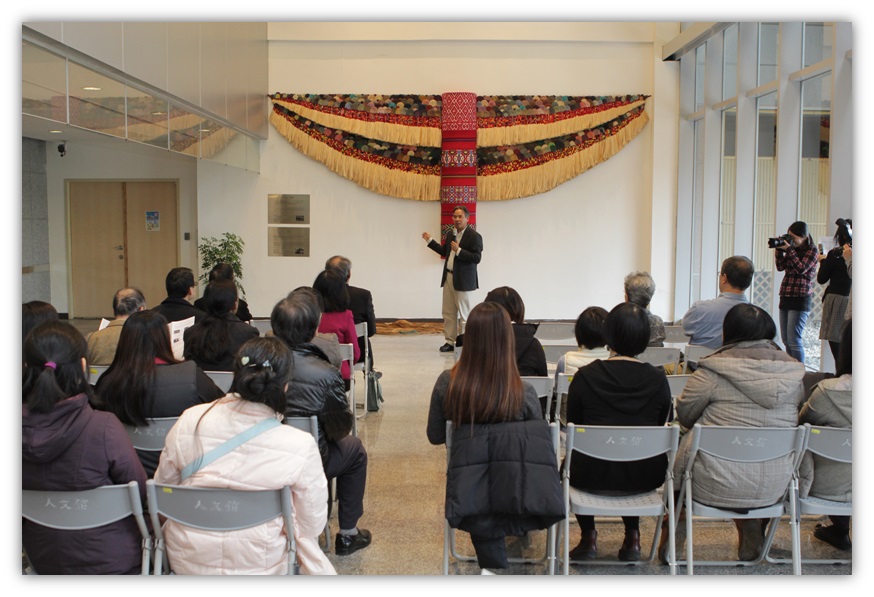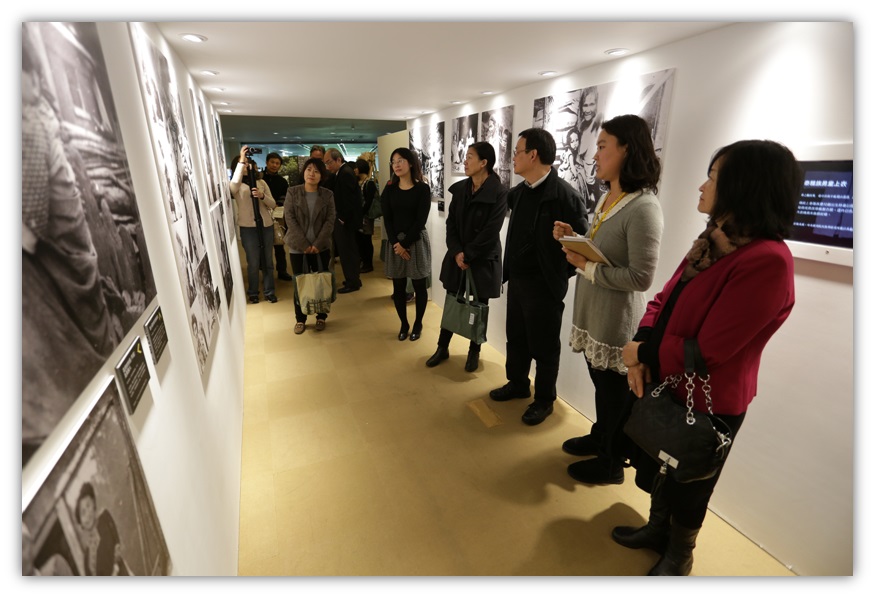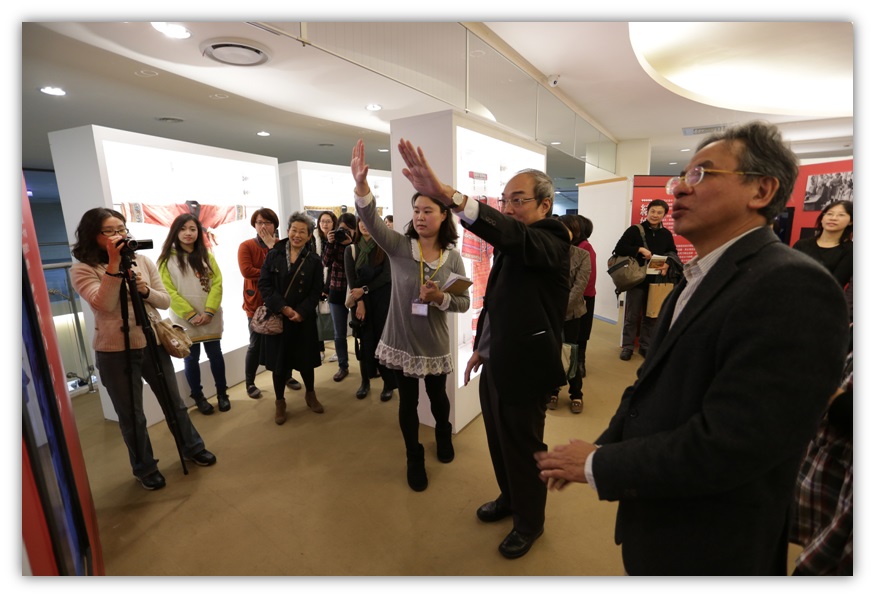| 2016-02-01 |
|
On January 29, when it turned warm after a cold current, the opening ceremony of the exhibition “Between Warp and Woof: Weaving Aboriginal Life Stories” started at 2pm in the North Hall of the Humanities and Social Sciences Building, Academia Sinica. The ceremony was attended by distinguished guests including Academia Sinica Vice President Wang Fan-sen, Museum of Institute of Ethnology Director Ho Tsui-ping, and Academia Sinica Digital Center Director Lin Fu-shih. This second “Between Warp and Woof” exhibition, co-organized by Academia Sinica Institute of Taiwan History, Institute of Ethnology, and Digital Center, redisplays the materials from a previous exhibition held in Taichung’s National Library of Public Information last year. The exhibition, featuring valuable images from several digital archives, as well as physical clothing and traditional looms, interweaves aboriginal females’ passage of life with aboriginal weaving culture, exploring the weaving traditions and rites of passage among ethnic groups of Pan Atayal (Atayal, Taroko, and Sediq), Paiwan, Kavalan and Pan Siraya. It guides the audience to appreciate the profound culture embedded in the aboriginal clothing through a story line starting with weaving materials to the relationship of weaving and aboriginals, especially the relationship with women at different stages of life cycle. As the aboriginal weaving culture gradually fades due to political policies and the clash of modern market, there is a growing movement to revive aboriginal culture which encourages younger generations to bring back the weaving culture and spirit belonged to their own ethnic groups. Welcome to enter the fascinating world of aboriginal weaving culture, learning the personal and family life memory weaved in the clothing and experiencing the beauty of Taiwan’s special humanistic scenery.  Institute of Taiwan History Director Hsieh Kuo-hsing talks about the work on the wall by the Atayal weaving artist Yuma Taru.
 Guests attends guided tours.
 Guests experience interactive fitting device.
|




